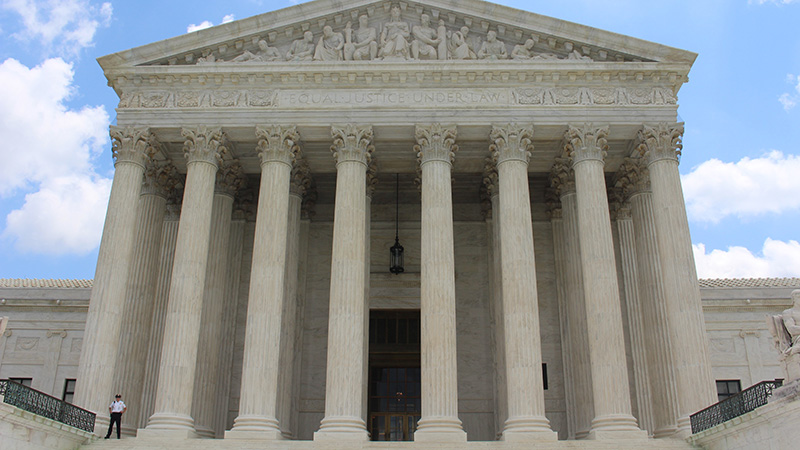
Angle

New Supreme Court Decision Offers Guidance on Mass Tort Preemption Defense
- Class Action & Mass Tort
- 3 Mins
After years of limited guidance, the Supreme Court has finally provided direction to lower courts on the issue of preemption when they delivered their opinion in Merck v. Albrecht. “Preemption” is a common defense used by defendants in pharmaceutical mass tort litigation. Through this defense, pharmaceutical companies argue that the state law causes of action are preempted by the Food and Drug Administration’s (FDA) control over drug and medical device approval and labeling.
The Preemption Defense
The Merck v. Albrecht case centers the drug, Fosamax, as a focal point in the mass tort litigation. Fosamax is pharmaceutical used for osteoporosis treatment and the case revolves around atypical femur fractures caused by use of the osteoporosis drug. Merck, the maker of Fosamax, asserted the preemption defense. Merck argued that it was the state’s failure to warn consumers of the drug’s risk and causes of action could not be brought against Merck because the FDA rejected its proposed warning label change in 2008. When Merck began to receive reports of atypical femur fractures in the early 2000s, it submitted a proposed label change to the FDA in 2008 and included a warning for fractures. The FDA rejected this labeling change, therefore Merck argues it cannot be sued for “failure to warn” because its attempt to warn was rejected by the FDA. The plaintiffs argue that the proposed label change was rejected because it incorrectly referred to the fractures as stress fractures, rather than atypical femur fractures. In 2011, the FDA requested and changed the label to warn of atypical femur fractures.
Preempted Evidence Standards
The District Court ruled in favor of Merck, finding that the plaintiffs’ claims were preempted by the FDA’s rejection of the proposed labeling change. The Third Circuit reversed that decision, ruling that preemption was a question of fact for the jury to decide. Merck appealed to the Supreme Court.
Prior to the Merck decision, the Supreme Court last addressed preemption in 2009 in Wyeth v. Levine. In Wyeth, the Supreme Court held that a preemption defense will succeed if the defendant can provide clear evidence the FDA would have rejected the proposed label change. The Court did not elaborate on what was required for a party to meet the clear evidence standards.
Decided by a Judge, not a Jury
However, on May 20, 2019, the Supreme Court released its decision in Merck. There were two key rulings handed down by the Court. First, the Court held that preemption is a question of law to be decided by a judge, not a jury. Second, the Court provided guidance on the litmus test required to meet the clear evidence standard set forth in Wyeth. The opinion further stated that in order to prevail on a preemption defense, a defendant must prove that (1) it fully informed the FDA of the justification for the label change; and (2) the FDA subsequently informed the defendant that it would not approve the labeling change.
A Higher Bar in Proving Preemption
On its face, this decision is a win for Merck. The Third Circuit now must review the case again in light of the Supreme Court’s ruling and keep the complex issue of preemption out of the hands of the jury. However, the decision has a significant and broader impact on the preemption defense as a whole. Under the test developed in the Merck opinion, it is no longer sufficient to argue that the FDA “would not have” approved the label change and defendants will now face a higher bar in proving preemption. Defendants must show that the FDA did deny the labeling change, but also now have the burden of proving that the FDA was fully informed when making that decision.
On remand, the case will focus on the information and label language provided to the FDA prior to rejection of the label change. While not opining on this issue, the Supreme Court expressed skepticism that Merck could meet this burden. It noted that the FDA rejected the proposed label change because the term “stress fracture” was not clearly related to the “atypical fractures” reported in the literature. The FDA also invited Merck to address the deficiencies and resubmit its application but Merck chose to withdraw the application.
Conclusion
The decision reached in this case will be instructive for other mass tort cases involving the preemption defense. Ultimately, the Court’s opinion will likely establish a high evidentiary bar for plaintiffs to clear in order to rely on the FDA’s rejection of a proposed warning label defense. If you found this blog informative, you may enjoy reading TCPA Case May Affect Regulatory Guidance Deference or The Epiq Angle Blog.
The contents of this article are intended to convey general information only and not to provide legal advice or opinions.
